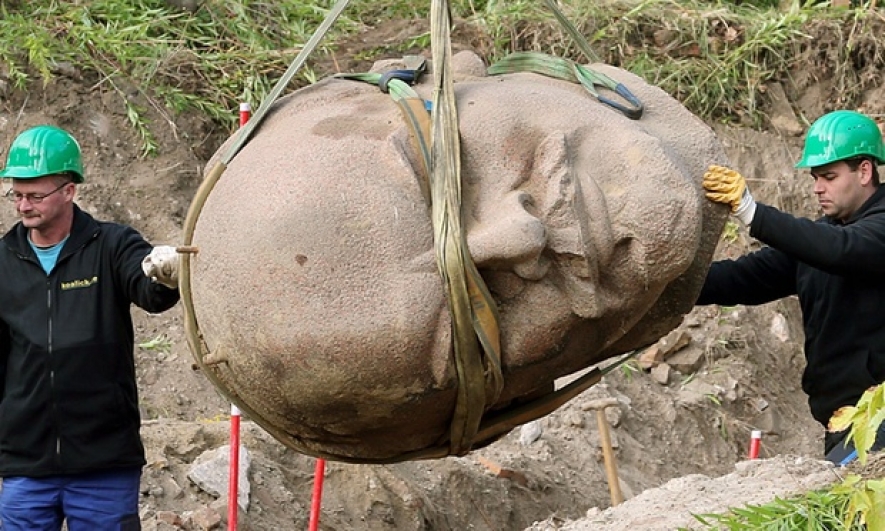The monument was unceremoniously torn down two years after the 1989 fall of the Berlin Wall. Its demolition, depicted in the German blockbuster movie "Good-bye, Lenin!", became a symbol of the end of East Germany and downfall of Communism in Europe.
The granite statue designed by Russian sculptor Nikolai Tomski was split into 130 pieces before being interred. Berlin officials said all other sections would remain buried.
Residents at the statue's former site in Lenin Square in east Berlin, now renamed United Nations Square, were divided over the about the prospect of the head being on display again soon. For decades in East Germany, Lenin, who led the Russian Bolshevik revolution of 1917, was held up as the model communist, feted everwhere in portraits, banners and statues.
A resident who gave only his last name as Seuder said: "Lenin to rise again? That doesn't work. History is over."
Other Berliners disagreed.
"That is a great idea. It was a shame to take it away in the first place," said a local resident who identified himself only with his first name Erhardt.
The statue was originally unveiled in East Berlin in 1970. The head is due to be displayed as part of an exhibition in the west Berlin district of Spandau together with other historic monuments.
"Because the statue is some 19 metres high (60 feet) ... there was no way that we would get the whole statue into our rooms, so we decided to display the head as its most recognizable part," said Andrea Theissen, head of Berlin-Spandau's art department.



















